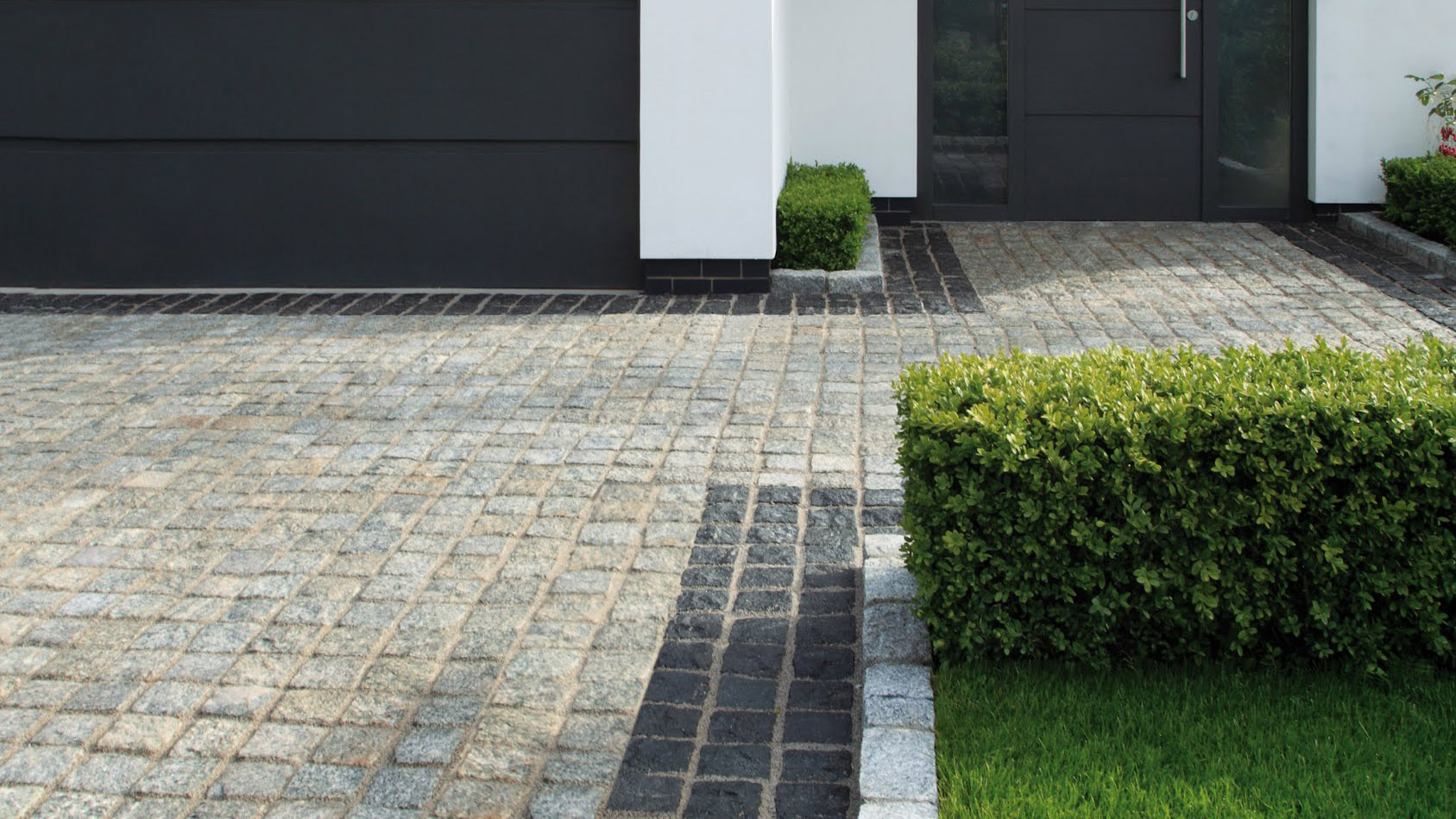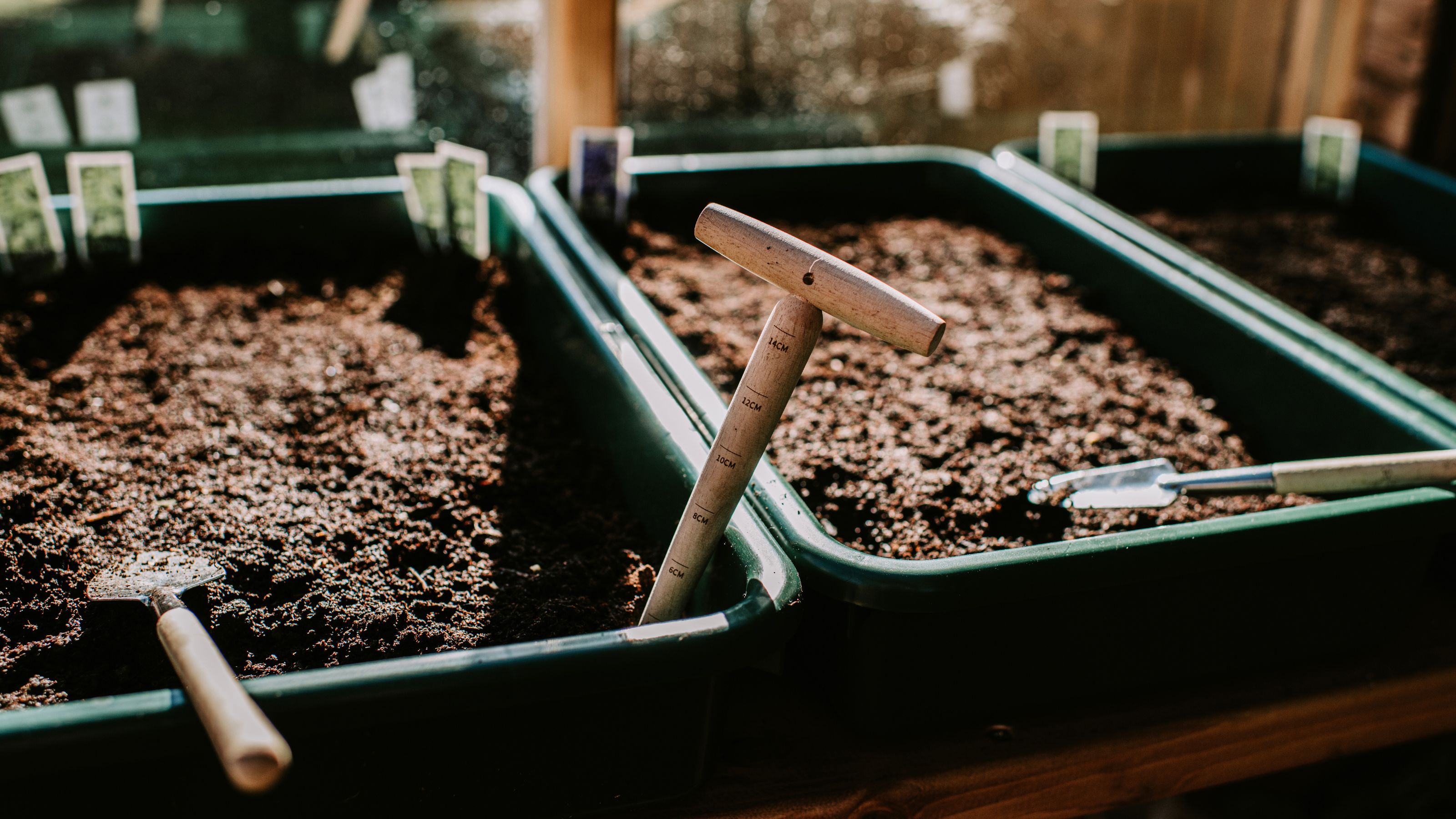
Block paving is a hardwearing and smart option when updating a driveway. By block paving a driveway you're instantly giving the front of your home a refresh and it's worth mentioning now that this is well within reach of a competent DIYer. Laying block paving is hard physical work and has to be done well to avoid having to redo it all. Paving a driveway is therefore the perfect project for summer, especially while we'll all be spending more time at home for the foreseeable future.
Find out how to lay block paving in our easy DIY guide below, then get more advice on how to plan and design a driveway in our guide, and if you're looking for more garden ideas you can check out our dedicated page.
- Find out more about garden design in our guide
What is block paving?
Usually made from moulded concrete blocks, clay bricks or natural stone, paving can be permeable to allow water to drain away. It allows you to be creative with your design – shades of terracotta and grey being the most popular. ‘Block paving is both durable and easy to maintain,’ says Emma Stone, at Marshalls.
Regular shaped clay or concrete blocks are the best option as their interlocking shape makes them easier to lay, compared to irregular (but cheap) natural stone sets.
Does block paving a drive require planning permission?
Provided you use permeable block paving, or direct surface water (such as rainwater) to a flowerbed or a ground drain with soakaway, block paving your driveway won’t need planning permission. You will need planning consent to direct surface water to storm drains in the road.
What does block paving cost?
Materials will cost £18 to £28 per m². Hiring a 2.5 to 3.5m³ skip costs £120 to £150.
How long does it take to lay a driveway?
Paving a driveway is a week’s work on average, but you can split it over two or three weekends.
How to lay block paving
You will need:
- Concrete block cutter (£50 per week)
- Mini-digger (£60 to £70 per day)
- Plate vibrator (£50 to £60 per day)
- Disc cut-off saw (£40 to £50 per week)
- Laser level
- Shovel
- Pickaxe
- Wheelbarrow
- Knee pads
- Protective eyewear
- Ear protectors
Strip back the existing driveway
Start by taking the existing driveway back down to hardcore; or for a new driveway, strip back at least 250mm of topsoil (150mm sub-base, 50mm sand, 50mm paving). Work out the depth of the build up (compacted roadstone and paving) at the highest point, usually nearest the house, and work away from there, allowing for a gentle fall of at least 1:80 (25mm per 2m run) towards your drainage. Set your levels out with a laser level and mark on firmly planted timber posts with nails to which you can attach a line as a guide for laying to. Set out the drainage.
Prepare the sub-base
Lay the sub-base material, either MOT Type 1 Roadstone, slag, or scalpings (order by the tonne bag or, for large loads, a loose delivery by tipper truck may be cheaper). Compact firmly using a plate vibrator.
Bed down the edgings
Block paving is only as good as the edging containing it on all four sides, so make sure edging blocks or kerbstones are firmly bedded down in concrete haunching – they’ll need to bear the weight of a car.
How to lay block paving
Lay blocks in sections, starting in a corner at the lowest point. Create a level area over the sub-base using sharp sand to a depth of around 50mm – it’s easier to get a level surface if you set out timber guide rails for the area to the correct level. Compact with a plate vibrator, then spread 15mm of sharp sand over the area as a loose screed and set to the correct level by drawing a piece of timber over the guide rails. Lay the blocks loosely, a course at a time, working to your chosen bond or pattern, leaving joint gaps of 2-5mm around each block.
Compact the blocks
Once the entire area is covered, sweep it thoroughly and compact with the plate vibrator. Finally, sweep jointing sand (kiln dried) with a dry broom over the entire area, ensuring all joints are filled and then vibrate again.
Paving a driveway checklist
- Dig out softer areas and compact more sub-base in.
- Randomly mix and lay blocks from at least three packs for even distribution of colour.
- Apply a silicone sealant to protect against spillages once the paving has settled.
- Make sure the driveway is at least 150mm below your home’s damp-proof course level.
- Direct the fall (water) away from your house or garage.
- Make sure the concrete mix isn’t too wet. Place it at the front and rear of your laid out edging and push into place using a trowel.
- Bed the drainage channels in the same way as the edging.
- Set out manhole covers at the outset. Use a recessed tray cover you can fit paving into.
More renovation how tos:
- How to paint a garage door
- How to renovate a house: an expert guide
- How to extend your home: the ultimate guide
- Front garden design: complement your driveway
Join our newsletter
Get small space home decor ideas, celeb inspiration, DIY tips and more, straight to your inbox!
Michael is Director of Content & Product Development for Future Homes. Prior to this he was Editor in Chief of Real Homes magazine, Period Living and Homebuilding & Renovating and he also served as Editor of Homebuiling & Renovating for several years. As well as being an expert in renovation, having presented multiple property TV shows and authoring Renovating for Profit (Ebury, 2008), Michael has a personal and professional interest in self build and helps others achieve their dreams of building a unique home. He is also Deputy Chair of NaCSBA and has campaigned for the self-build sector for many years, regularly sitting with government parties to advise on the industry.
-
 How to make compost — 8 easy steps gardening pros always use
How to make compost — 8 easy steps gardening pros always useLearn how to make compost at home in seven easy steps, whether you have a bin or want to create a compost heap. We've asked pros for their top tips
By Eve Smallman Published
-
 Planting ornamental grasses — the best types experts love and how to grow them
Planting ornamental grasses — the best types experts love and how to grow themWe've got you covered on planting ornamental grasses, speaking to experts about what ones to grow, how to grow them, and factors to consider
By Eve Smallman Last updated
-
 "Grotty" terrace is transformed with French flair and Ibiza vibes in the garden
"Grotty" terrace is transformed with French flair and Ibiza vibes in the gardenEsther Pillans' tired-looking Victorian terraced house was given a makeover with a touch of Parisian chic
By Ellen Finch Published
-
 40 fire pit ideas – DIY brick, stone or gas designs for backyards, big and small
40 fire pit ideas – DIY brick, stone or gas designs for backyards, big and smallGorgeous fire pit ideas will come in handy all year round. Choose to DIY yours, opt for a classic wood burning or gas fueled options for a modern, cozy setup in all seasons.
By Camille Dubuis-Welch Last updated
-
 Rock garden ideas – 10 DIY ways to create a rockery
Rock garden ideas – 10 DIY ways to create a rockeryThese rock garden ideas are suitable for outdoor spaces big and small. Create your own rockery on a lawn or even on a balcony with just a few materials.
By Anna Cottrell Published
-
 Cabin fever? These chimineas will extend the life of your patio
Cabin fever? These chimineas will extend the life of your patioThis cold-weather season, cozy up to our favorite chimineas!
By Brittany Romano Published
-
 5 outdoor summer essentials to prove Society6 is your one-stop-shop this season
5 outdoor summer essentials to prove Society6 is your one-stop-shop this seasonCheck off all of your outdoor summer essentials by shopping exclusively at Society6.
By Brittany Romano Published
-
 The first-ever Etsy outdoor sale is happening now, and we're buying these 5 items
The first-ever Etsy outdoor sale is happening now, and we're buying these 5 itemsFor a limited time, this Etsy outdoor sale will give your backyard the facelift it needs — at a fraction of the cost.
By Brittany Romano Published